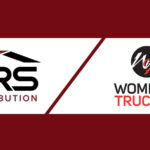The wholesale distribution industry is experiencing a significant shift due to the influence of B2C customer preferences, such as the desire for personalized offers and digital experiences, on B2B selling. This shift, known as the “retailization” of the industry, presents a challenge for today’s wholesale distribution companies, who must decide how to adapt and stay competitive.
Wholesale distribution companies have two options: stick to traditional business models that are not tailored to modern customers or adopt new technology and best practices to stay competitive. Although the latter may seem more appealing, it can be challenging to implement. Industry vendors have joined forces to help wholesale distributors navigate the retailization of the industry. With the proper guidance and a strategic combination of technology and best practices, wholesale distributors can provide their customers with a modern experience and create new revenue streams for business growth.
Technology and automation can help transform challenges into opportunities
To effectively navigate the retailization of the wholesale distribution industry, digitizing parts of the business is essential. This can be achieved through the integration of front-, middle- and back-office systems, which allows for the digital connection of data and processes to improve both supply chain operations and the customer experience.
To remain competitive, wholesale distributors use modern, cloud-based ERP and SCM platforms to offer value-added services, omnichannel capabilities and customer engagement opportunities. By combining the right technology offering with expertise in wholesale distribution, companies can create new revenue streams, including subscription models, private-labeled products, kitting and D2C sales.
Integrating front- and back-office solutions allow distributors to introduce new business models quickly and improves operational efficiency. Automated business processes help distributors run more efficiently, leading to increased profits.
Top 3 strategies for adapting wholesale distribution for the retailized future
- Expand your customer experience by offering new self-service options like Direct-to-Customer (D2C) sales and Buy Online, Pick Up In Store (BOPIS). Consider which products and services you will sell in these new channels and how this will shape your customer experience. This will allow you to shift away from a one-size-fits-all approach and improve your relationship with customers. A well-designed BOPIS experience can drive retail traffic to your distributor branches.
- Wholesale distributors must find ways to give more value as customer preferences and expectations change. This necessitates going beyond simply responding to problems or feedback and incorporating services. Instead, try implementing revenue-generating business models that offer personalized experiences, such as eCommerce, omnichannel, subscriptions, white glove delivery and more.
- Develop a vision for your business with the help of a specialized transformation team. This team can assist you in mapping out new revenue generation goals and creating a plan to achieve them. As a business leader, it is important to have a clear vision and find the right partner to help bring it to fruition.
Learn more about how to prepare your wholesale distribution business for the future
Oracle and KPMG have published a comprehensive resource for executives interested in the retailization of the industry and how to adapt competitively to take advantage of the opportunities it presents. This resource includes information on industry changes, guidance on using technology, and additional best practices for transformation.
Related Posts
-
Caleb Grothaus is the new Director of Business Development, and Dave Wall has been promoted…
-
SRS is a new corporate member for the association that aims to empower women as…
-
The partnership will allow ISSA to utilize Staples’ training facilities to host training and certification…





